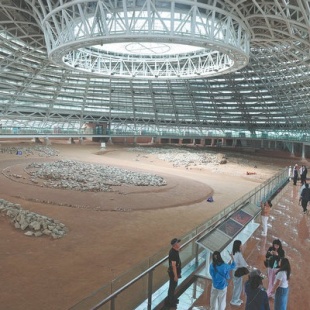Prehistoric echoes of our future
Global scholars explore how Chinese civilization's roots nourish profound modern vitality, report Fang Aiqing and Wu Yong in Chaoyang, Liaoning.


For years, an excavation team directed by Jia Xiaobing, a researcher with the Institute of Archaeology, Chinese Academy of Social Sciences, has particularly paid attention to revealing how Niuheliang functioned as a ritual center of Hongshan.
According to him, around 5,800 years ago, the community initiated large-scale construction that spanned about 200 years, with the layout designed in advance. This showcased the availability of sufficient material resources and the strength in social organization and mobilization.
A sacrificial ritual system centered on the worship of heaven, Earth and ancestors was developed, integrating a decentralized society with a wide geographical distribution and weak economic interdependence.
Jia says that the three-tiered circular altar, believed to be associated with the celebration of heaven, indicates that the Hongshan community was aware of astronomical observations and utilized specific celestial phenomena for ritual purposes.
They attempted to reconstruct its building process: drawing a square with a side length of 15.6 meters, using its diagonal, measuring 22 meters, as the diameter to draw the outer ring; drawing the square's incircle to serve as the middle ring with a diameter of 15.6 meters; inscribing a square within the middle ring and taking its incircle with a diameter of 11 meters as the inner ring — the numbers align with documented practices of the Han Dynasty (206 BC-AD 220).





































